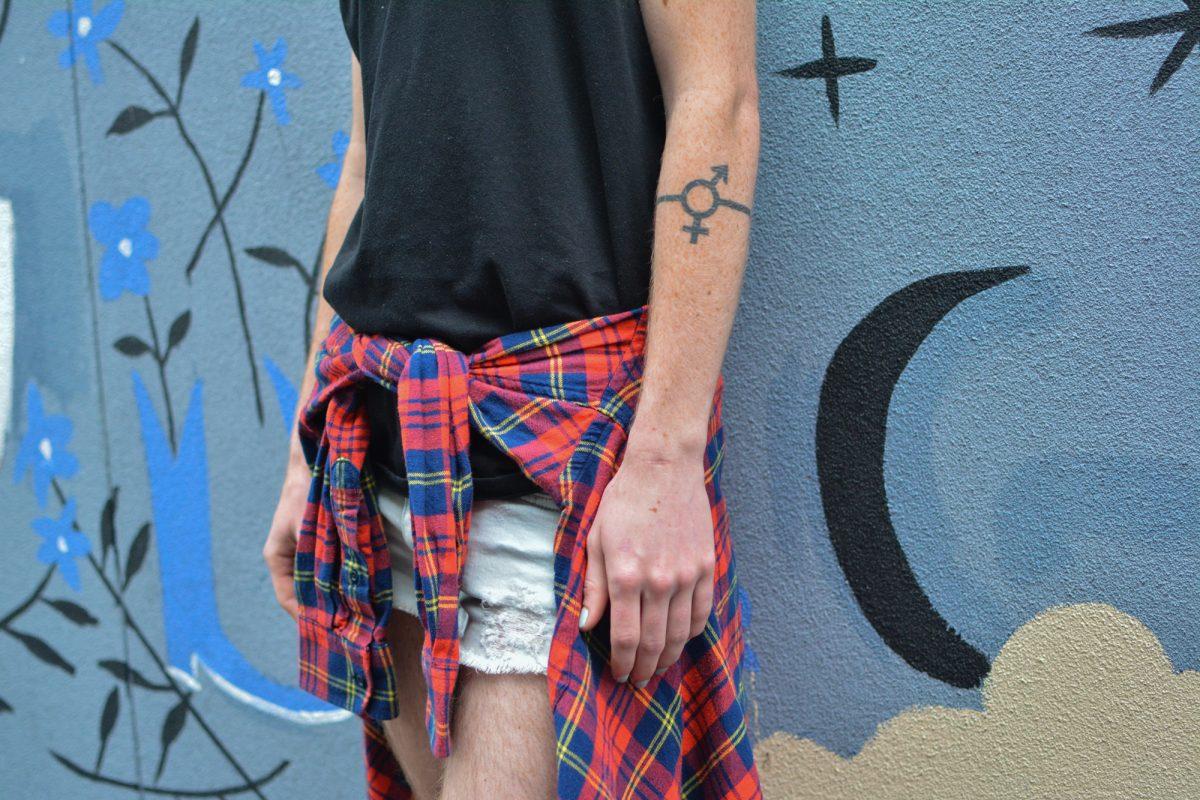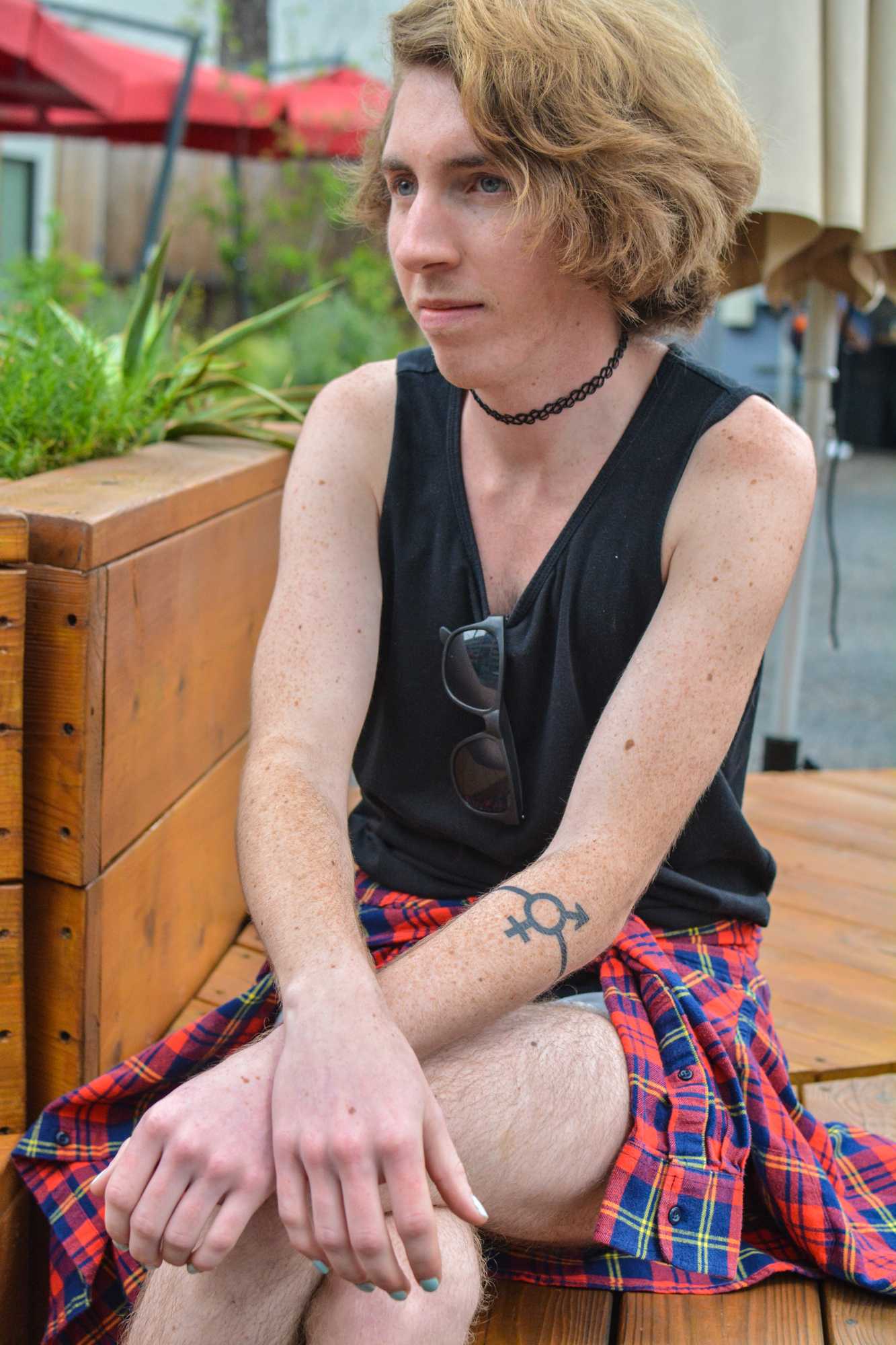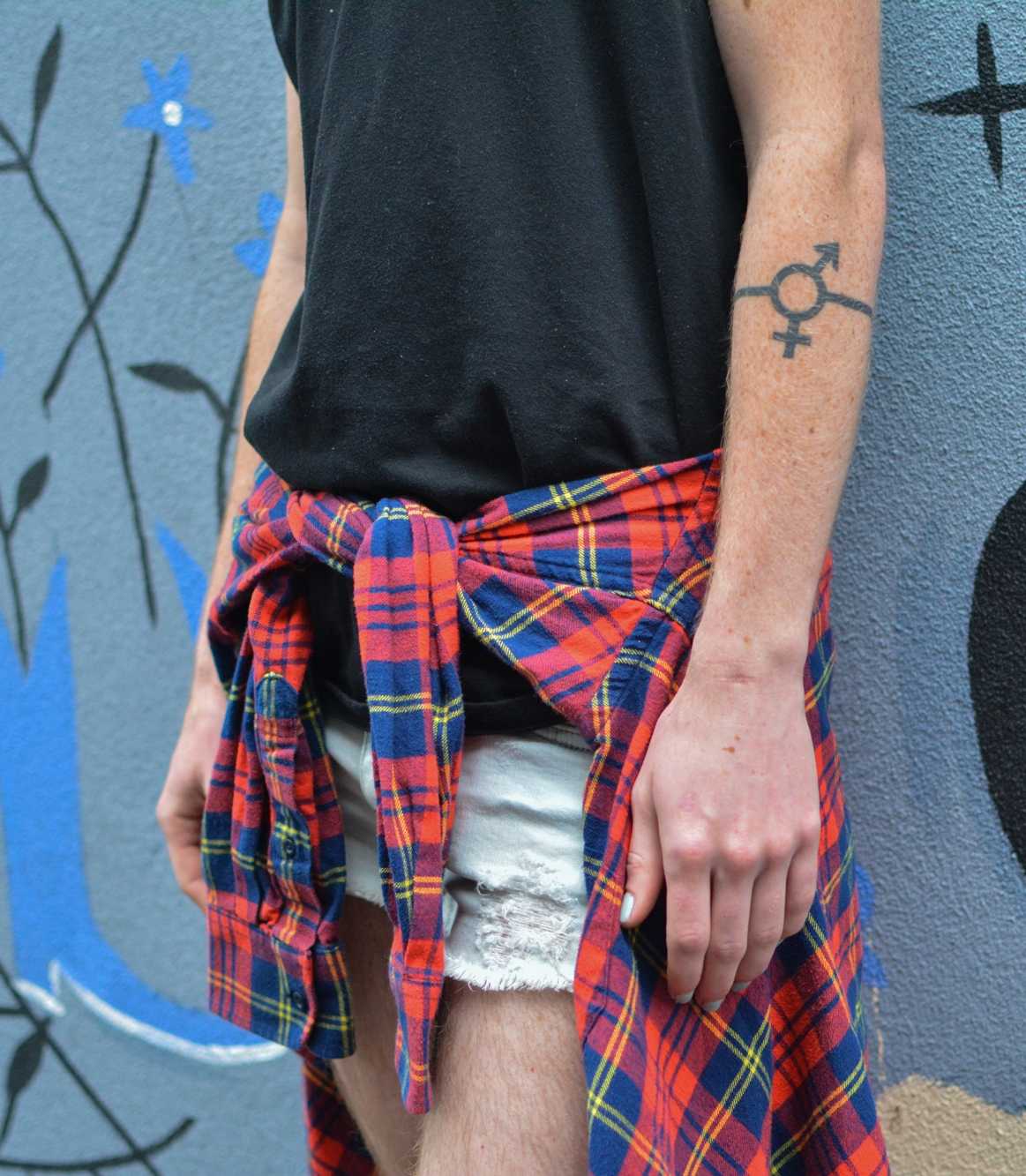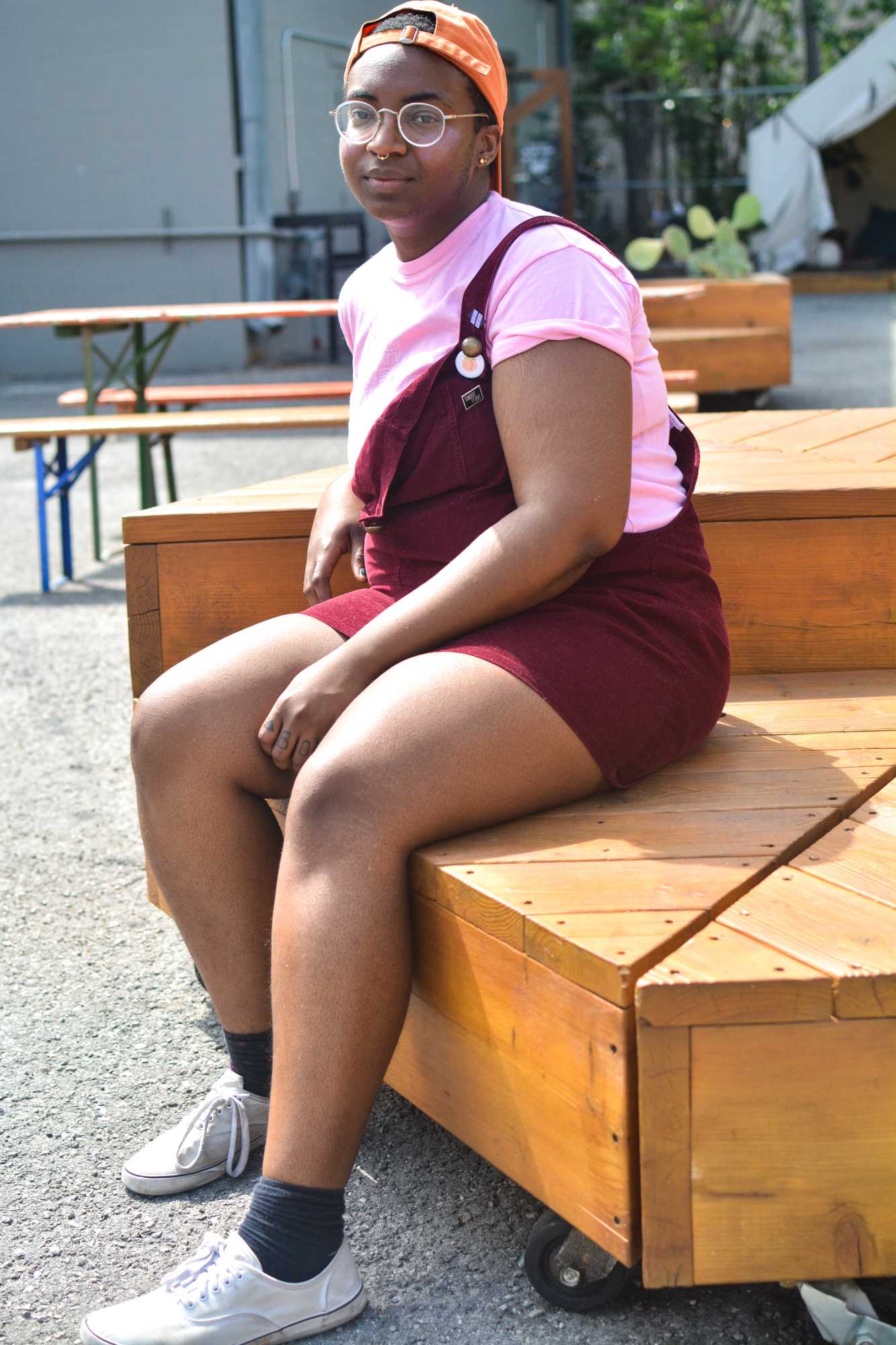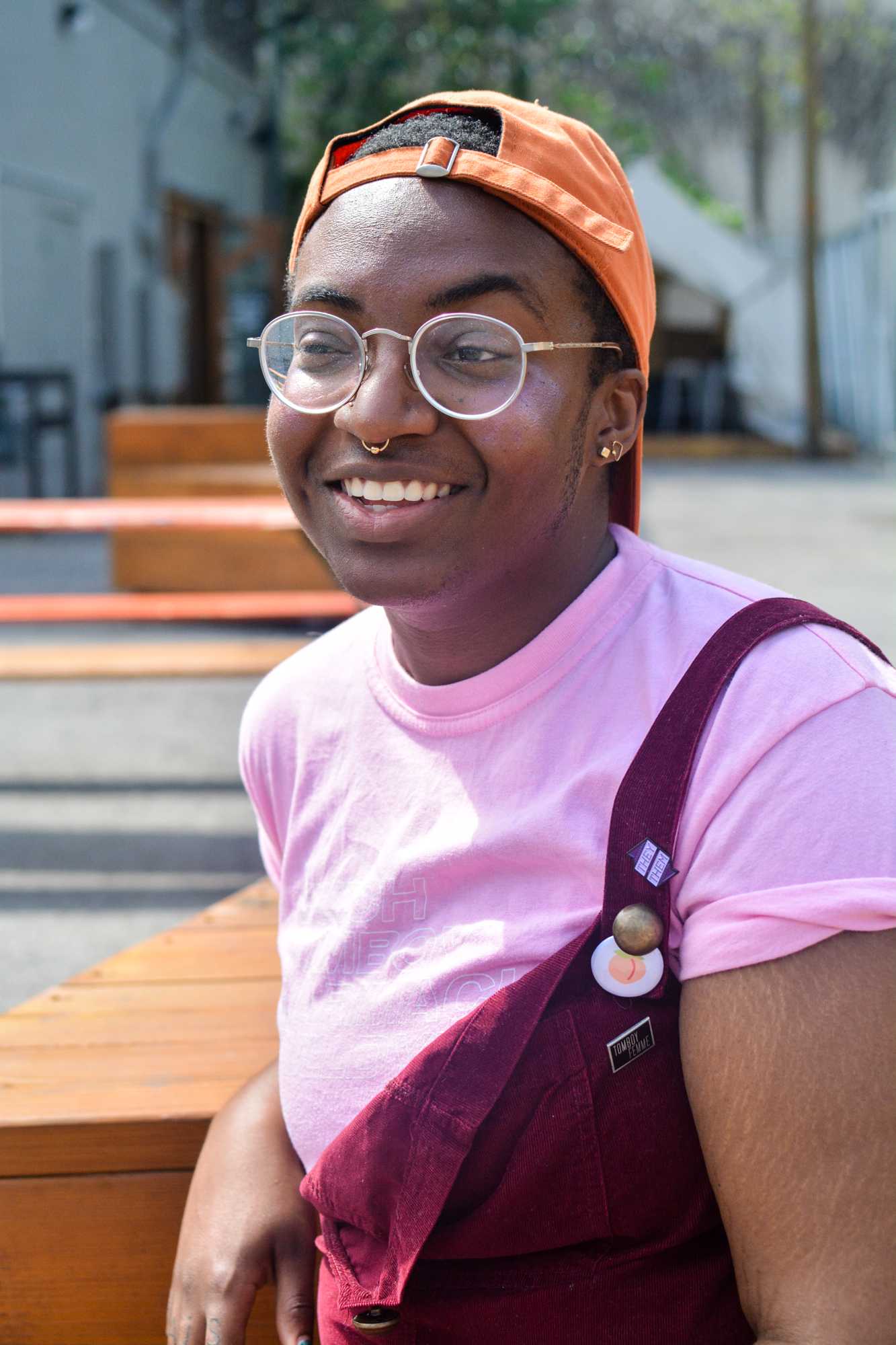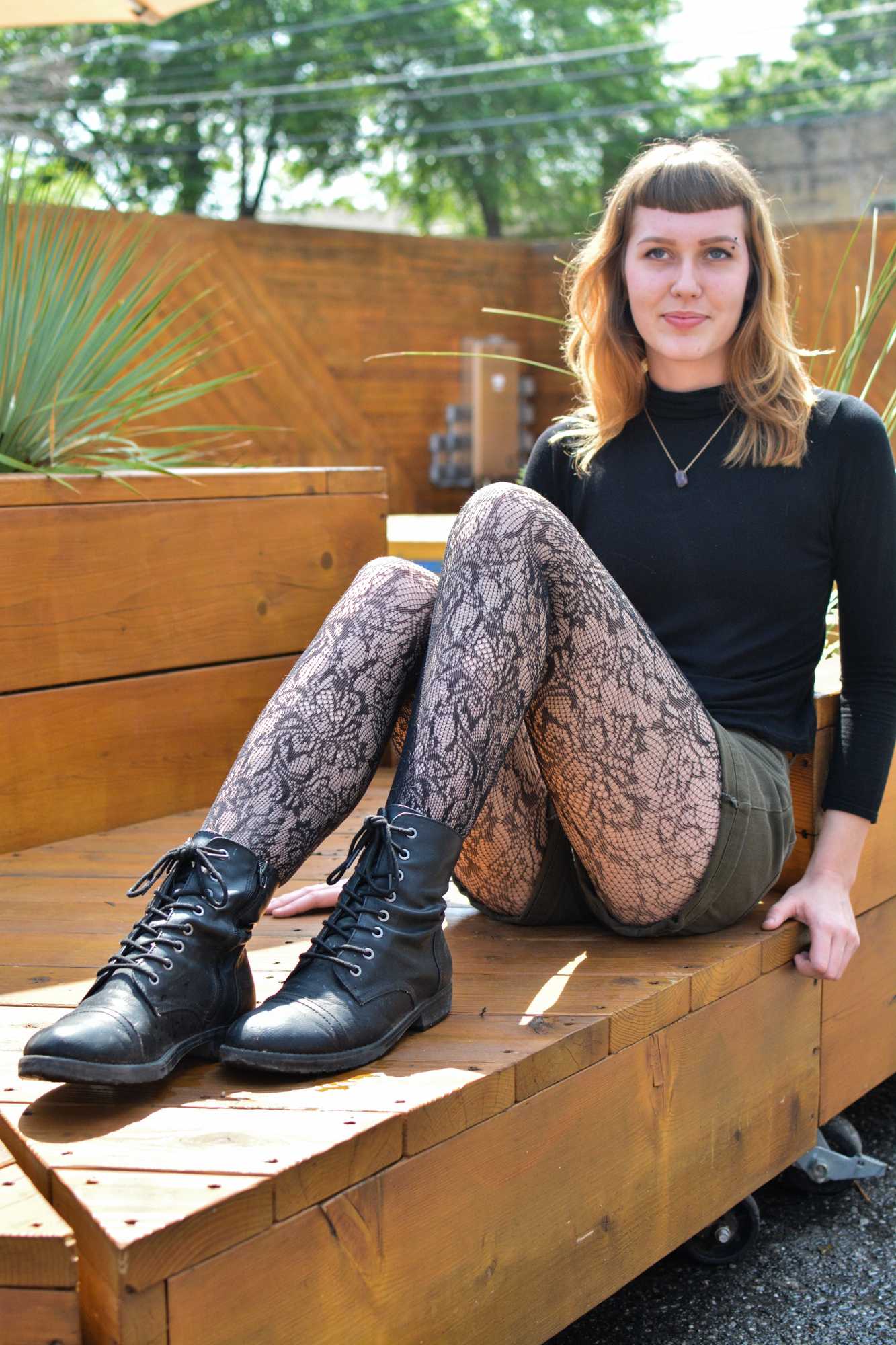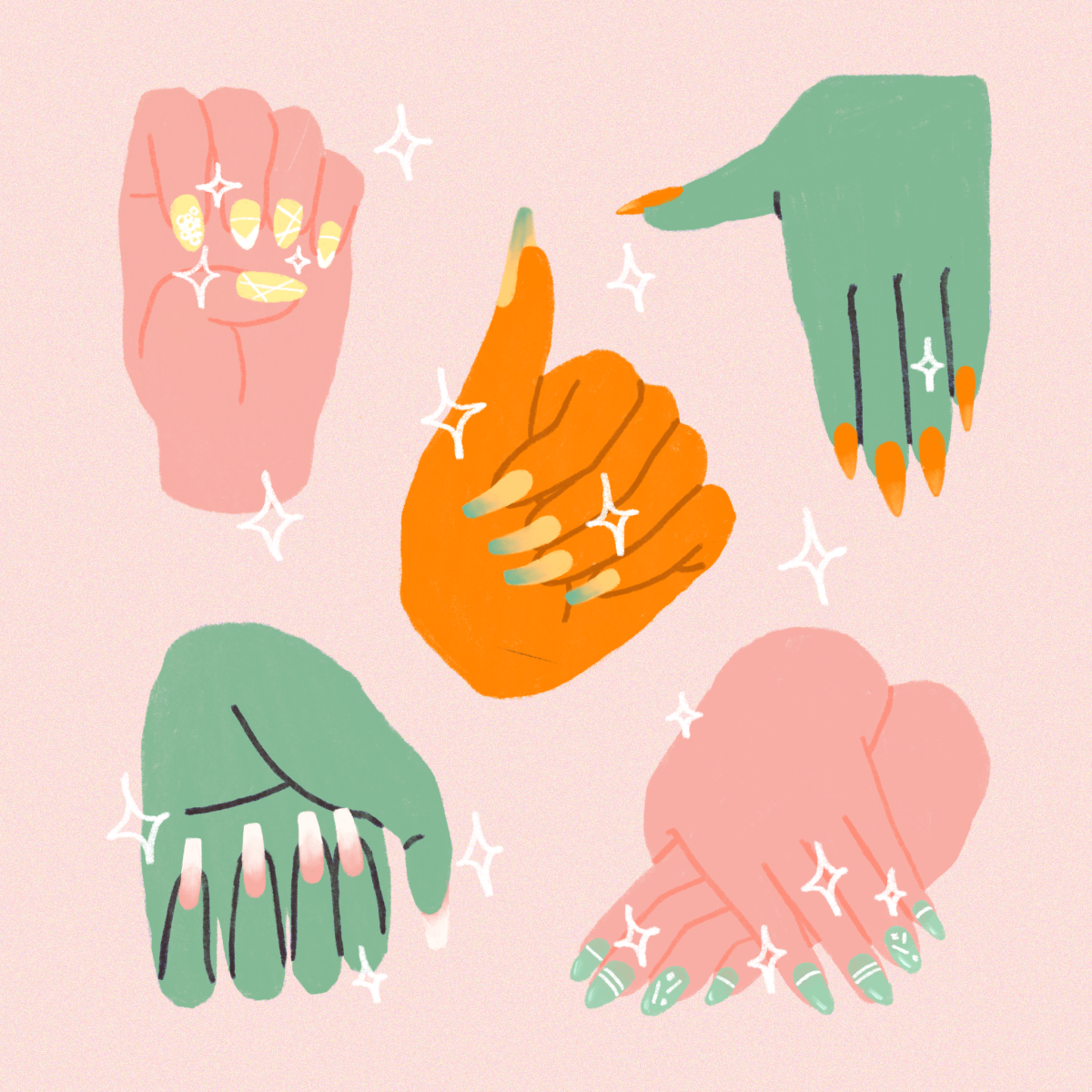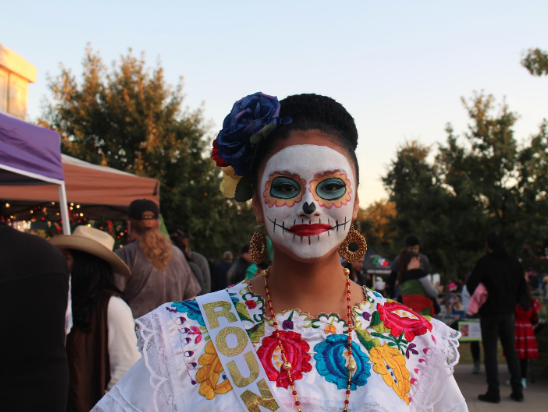Non-binary is a term that references a more specific trans identity by identifying as neither a man nor woman, a combination of both or something else entirely. It sheds the arbitrary binary system of gender, and becomes especially clear in regards to personal style. Not all non-binary people experience their gender in the same way and likewise, not all express their identities through fashion in the same manner.
Story by Rachana Jadala
Photos by Ashley Ephraim
Gender expression, relevant to both non-binary people and others, is intimately linked with fashion and presentation. Second-year psychology student Royale Reeves says personal style is influenced by identity and how that identity is used (for/to make political statements). “For me it’s a combination of expressing my inner identity that makes sense to me and making a political statement because of my identity in terms of being visibly queer,” Reeves says.
Pictured above: Royale Reeves.
Non-binary people come from a multitude of ethnic backgrounds and have existed just as long as men and women have. Fashion is a personal expression that showcases multiple identities simultaneously, whether it is understood by the world or not. “Especially as a non-binary trans person, fashion is really a way to experiment with my gender and figure out how I want the world to see me, as opposed to how the world is conditioned to see me,” says Alaina LaRae, a first-year performance as public practice graduate student.
There is no singular non-binary fashion, and this enables a wide range of ways to express this gender non-conformity. Reeves describes their style as “queer punk on a budget.” “For me it looks like a combination of what people would consider masculine and feminine clothing,” Reeves says. “Some specific items include homemade cut off jeans, make up and necklaces and just anything else that’s comfortable.”
Non binary style can be a mix of feminine and masculine, more masculine or more feminine. The possibilities are endless. “My style includes florals a lot and feminine pieces. Solid colors are fun and intricate detailed pieces as well. I like dark colors juxtaposed with bright colors or just dark colors. Usually my outfits reflect my androgyny inside even if it is not obvious,” says Frances Pitts, a first-year visual arts studies major.
Pictured above: Alaina LaRae.
In contrast, LaRae describes their own style differently. “I would describe my style as femme prince aesthetic,” LaRae says. “I enjoy things that are utilitarian, but also pretty feminine. Dresses with shorts under them and sneakers because I have to run across campus. I like adding feminine touches to a more tomboy look.”
In terms of shopping, many non-binary people tend to shop from both sides of gender-segregated clothing stores. There are few brands that specifically cater to non-binary people however, such lines tend to be more expensive, especially for a college student’s budget.
Other preferred places to shop include thrift stores, ModCloth and Target, LaRae says. Another resource for non-binary students on campus, and anyone of any gender is the Gender and Sexuality Center clothing swap. “The Gender and Sexuality Center clothing swap is also one of my favorite places to get clothing I like” Reeves says. “It can be difficult to find clothing that matches an individual’s aesthetic and gender identity especially when there are few clothing lines that specifically target non-binary and androgynous consumers.”
Although some non-binary clothing lines have been created, they oftentimes lean more towards masculine apparel. It is important to critique such clothing lines, while simultaneously acknowledging the importance of their existence. These lines tend to use loose fits and “gender-neutral colors” such as blue, gray, and black. The lines seem to avoid femininity in order to appear gender neutral. “This is an inaccurate representation of how many non-binary and androgynous people present themselves and feel,” Pitts says. “It’s very bias in terms of what defines ‘the default’ or ‘genderless.The default is just masculine and what guys would wear, not femmes. Like men could wear any of that and be considered normal.”
In addition, these lines are not really created by androgynous people or for all types of bodies. “I do not really see it as androgynous, but I see it as a more of a classic clean look,” LaRae says. “I think it is kind of fake to call it androgynous. It really only looks the way intended on thin bodies, it is not really accessible to people who are not a size zero. So, in that way it is a really fake look.”
Pictured above: Frances Pitts
Although fashion provides a way to explore gender, artististic expressions and internal dialogue are also key components of expressing one’s identity. Writing, music, and other artistic expressions can also be used to express gender. “Writing is one of the ways I have been exploring my gender,” LaRae says. “I also explore my gender identity through my research, my research is very personal and also political.”
Despite the difficulties and violence trans and non binary people face, they’re navigating gender expression and are overcoming socialized expectations of binary gender while using fashion to make it visible. ““I have a lot of privilege as a white person,” Reeve says. “I have the privilege to be a political statement, if I can be safe as a political statement I should. Although this depends on mental health, and safety and political context. Sometimes I dress masculine if I know I will feel less safe that day.”
The world is becoming increasing accepting of visible queerness, but must instead move towards the genuine celebration of queer and trans identities. “Androgynous style must be dominated by actual non binary and androgynous people, people should be able to control their own narrative,” Pitts says.































